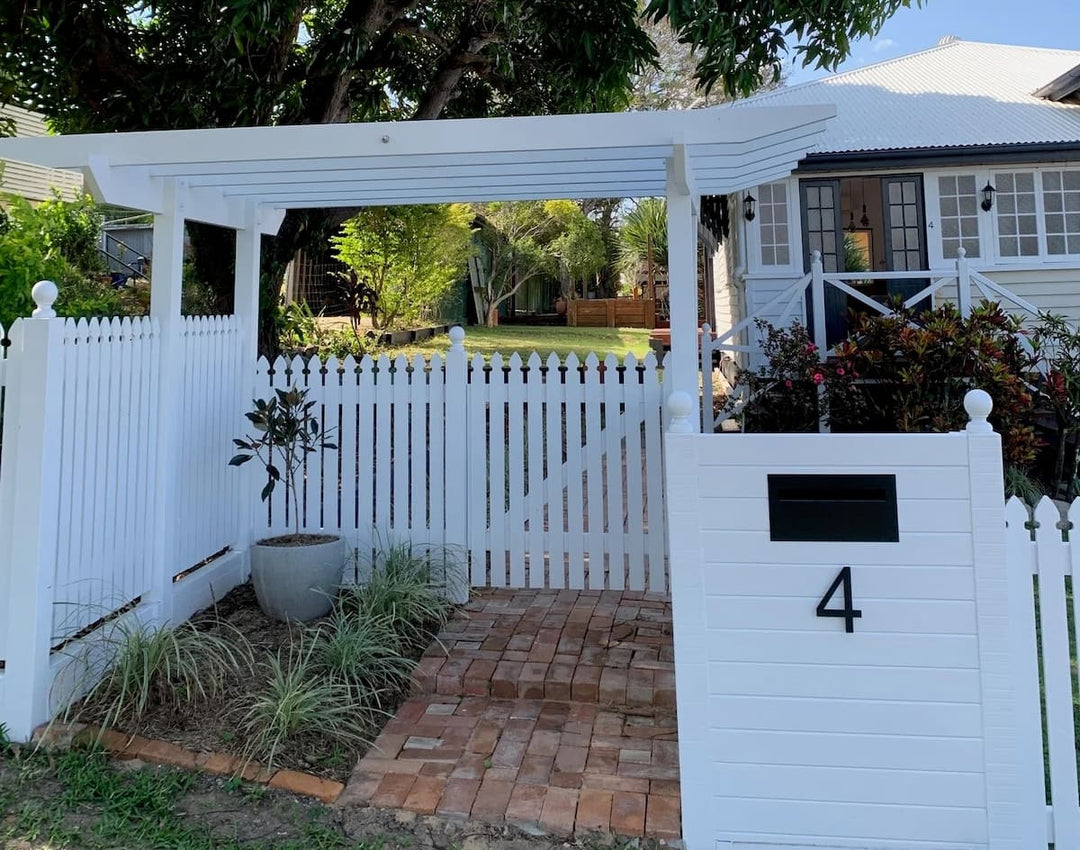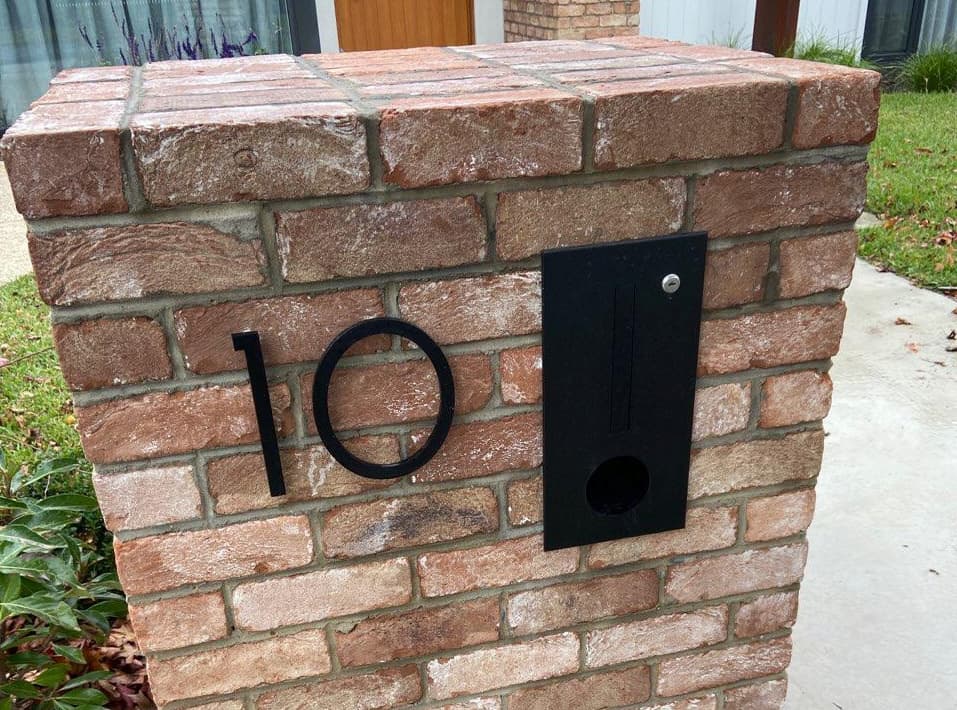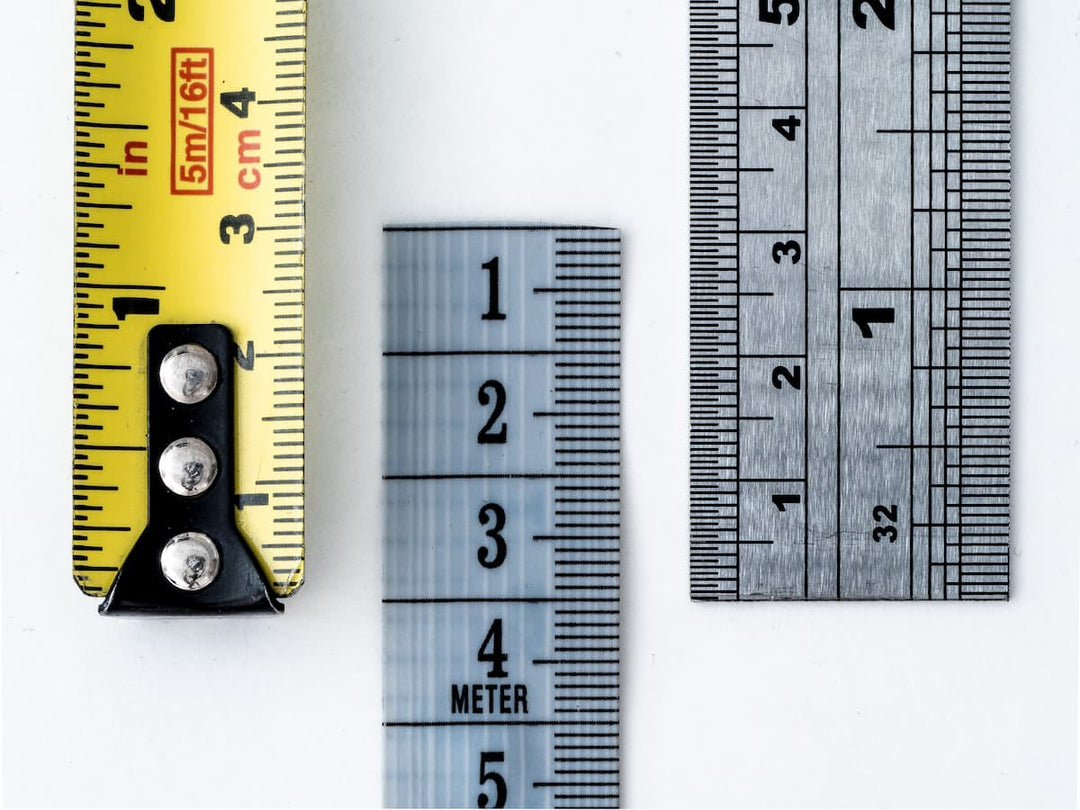The ultimate guide to house numbers
Choosing a house number for your home is more than simply a functional decision. It’s also an opportunity to differentiate from from your neighbours and find the style that’s consistent with the desired look of your property. Your house number is usually the first thing that people notice when they arrive at your home - particularly if they haven’t been there before, and are needing to see it to confirm they’re at the correct place!
In the below guide, we’ve detailed the broad range of styles and types of house numbers available to you, plus a number of frequently asked questions related to house numbers. With so many options available, there’s something for everyone’s budget and sense of style.
What types of materials are used for house numbers?
There's a range of different materials to choose from when selecting house numbers - each with it's pros and cons. Below are the most common.

Steel house numbers - Steel or stainless steel is a commonly used material for house numbers. Stainless steel is steel with a chromium oxide layer that helps prevent it from rusting - so can look great for a long amount of time.
Aluminium house numbers - Aluminium is commonly used with outdoor furniture and in environments where there is exposure to harsh climates such as seaside areas. Although less common in Australia, this is the material of choice if you are seeking a modern house numbers with sharp lines.
Brass, copper or bronze house numbers - These are all premium / luxury metals which can look great, but also come with a hefty price tag.
Vinyl decal house numbers - This type of house number is a permanent sticker with a strong adhesive that can be a great option for clean flat surfaces such as letterboxes.
Wooden house numbers - These are not uncommon, but often not a great idea! Depending on the timber you use, this will degrade over time so requires ongoing maintenance through either re-application of varnish or paint.

Tile house numbers - In many countries, tile is the most widely used material for house numbers. This is because those tiles are removable and can easily be replaced if they become damaged in any way. Tile also can provide a neat framing for a number, and provide a contrast effect between the house and house number.
Curb house numbers - These could be considered a different category of house number completely, and can co-exist with your choice of house numbers on a fence or front door. Curb house numbers are applied on the concrete gutter at the front of a house, usually through the use of a stencil and paint or spray can. They can assist in quickly locating your house in the event of an emergency requiring a visit by the police or an ambulance.
What colour should I choose for a house number?
Don’t be afraid to choose your house number in a colour that’s different from the rest of your home. Whilst many people choose a black number for a black house - there are no set rules for this, and there’s no need to feel that you need to match unless you really want to.
The most important aspect of choosing the colour of your house number is to ensure that it’s still easy to read. Whilst you may find that a bright red or purple number is a bit of a conversation starter, it may not be the easiest to read when driving/walking past.
Another key consideration is to select a contrasting colour to the surface the number will be affixed to. For example, if you have a dark coloured brick fence, then a brushed aluminium house number would be a good choice, or for a light concrete coloured fence, a black house number will ensure it adequately stands out.
You can check out more tips in our post 3 Tips for Selecting House Numbers to Maximise Visibility.
Where to place house numbers?
The common place to place a house number in front of your house is the side of the brickwork, on the left or right of a gated entry. Some lettering and numbers can look effective at the front of the house - especially if you are going for a vibrant colour theme. Some people also like to place house numbers at the front door. This really depends on how close your front door is to your fence.
What's the difference between a letterbox number and a house number?

Depending on the layout of hour house and garden, it may be more simple to affix a number directly on to your letterbox rather than a fence or nearby structure. This is often the case with properties that don't have a fence, but have a single post with a letterbox. In this situation, a metal number can be used, or you may opt for a vinyl decal house number.
Letterbox numbers are often smaller in height than standard house numbers.
What are house number signs?
House number signs also called plaques are where the number (or letters) are cut out of a single piece of metal. For example, you could have a house number sign with the numbers '123' in a circle or rectangle metal piece.
House number signs can create a impactful entry to a residential or commercial proerty.
How do you attach house numbers?
The most common material that a house number is affixed to is brickwork, followed by a wooden fence or post, or the letter box itself. Typically, there are two methods available for adding house numbers to your home;

The first method involves affixing either a house number (or letter) or a plaque directly on to the desired surface through a series of screws (or rivets) and holes. This is typically achieved through using a masonry drill to create a small hole in the brickwork, a fastening plug for holding the screw, and then screwing from the front side of the house number in to the fastening plugs. While this first method is simple and effective, it does result in visible screws on the front of your house number.
The second method is to simply use a strong glue such as Selleys Liquid Nails to affix the number. Providing you’re careful (and don’t ever plan to remove it) this can result in an effective flat mounted effect, with no visible screws.
More recently, many people are opting for modern house numbers that have a “floating” type effect. This style of house number has a spacer between the number and the brickwork giving the house number a more dynamic 3D style.
How to clean brass house numbers?
You may have noticed brass house numbers rusting over time. This can be a problem if the bricks or specially treated surfaces you have included in your house design mean that the house numbers come into regular contact with the elements.
When the brass is exposed to the elements, it will tend to rust. For brass house numbers, we recommend that you use some fine grade steel wool. Sweeping the number gently with steel wool will help to remove the layer of rust and polish the brass to a high degree.
Alternatively, you could use some high grade car polish to help polish the brass.
Where to buy house numbers?
You can find basic house numbers at DIY hardware stores such as Bunnings or Mitre10.
You can order them directly from our website!
What font should I use for a house number?
Your choice of house number font should be consistent with the style of your house.
If your house is a mid-century style for instance, then a sans-serif house number font that is clean and simple should be used. Often a matt-black colour or brushed aluminium number is used here, creating a sharp and modern appearance.
If your home style is more Edwardian, or Victorian then a serif font is more appropriate.
How big should house numbers be?
House numbers should be at least 10cm high to be effectively read from the street. Your choice of size really depends on a couple of factors. The first is the distance of the house number from your entrance and the second is what space you have available for the house number to be mounted on.
If you decide to go with large house numbers, our standard custom made numbers are available in up to 400mm height. If there's a larger number that you're after, please get in touch and we would be happy to assist.
You can check out our blog post with tips on selecting a house number size here.
Where should house numbers be placed?
There are no set rules, but most people like to affix a house number on or near the front door. If the layout of your house means that there is a distance between the front fence and your front door, then the front fence is the most logical placement for your number.
Again, depending on the layout, it's not uncommon to have house numbers in multiple places.





Leave a comment